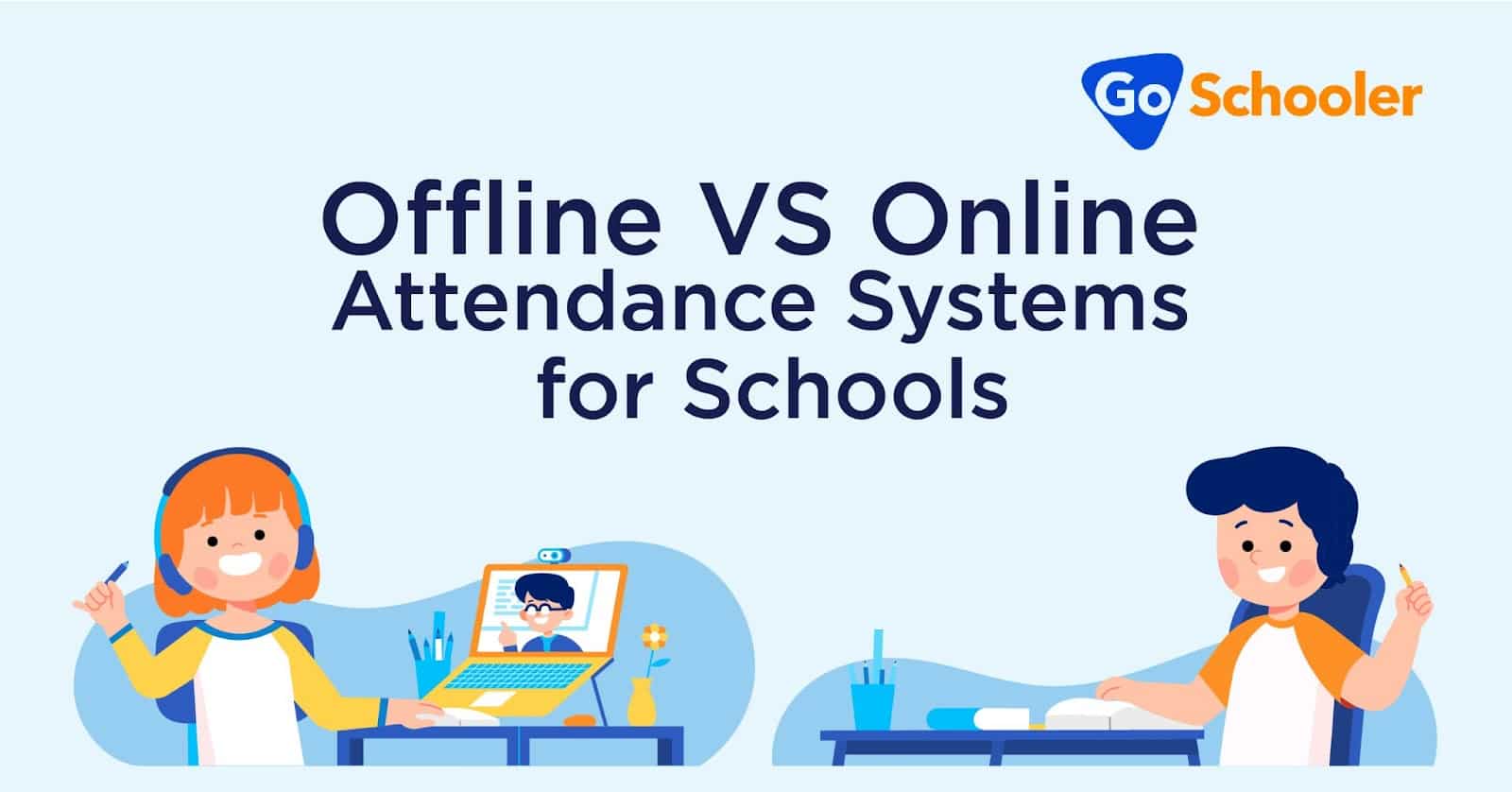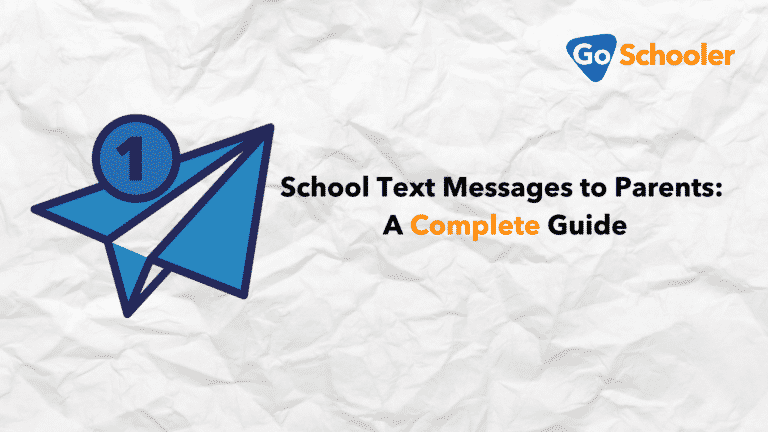The world of education is slowly adapting to the new world. For thousands of years, classrooms became the cornerstone of learning. But now, our classrooms have migrated to the online world. With that, how will we take the attendance in classes? Offline vs online attendance systems for schools are worth exploring.
Migrating to the online classroom has posed new challenges, and taking attendance is one of them. How do we take attendance if we’re not physically together? If the student is present in the online classroom, but their camera is off, are they really present?
Let’s discuss the advantages and disadvantages of offline vs online attendance systems for schools.
Online Attendance Systems
Online attendance systems have been around for a while. Large corporations and companies are using it for their employees. With the recent turn of events, schools have adopted this method of checking attendance.
The students can self-report in electronic timesheets that will automatically record their responses. The teacher can also make use of a Google Form since it’s easy to use and it’s free.
It’s important to identify the needs of the school so they can choose the right school management system. There are also articles on how to choose the right school management system for reference.
These systems also make it possible to easily communicate with the parents concerning the attendance of their children.
Since all processes are done online, it would be easier to show the parents the records of the student’s attendance. It would also be just as easy to communicate what can be done to solve the problem.
Let’s dive deeper into the advantages and disadvantages of online attendance checking.
Advantages
Easy and Convenient
All the students have to do is to access the program that takes their attendance. This can be an automated attendance management system or something as simple as a Google Form. They then fill up a form, and that’s it!
For the teacher, all they have to do is access the system and see if the student has already filled up the attendance. The teacher can then follow up with the students who have not yet filled up the attendance to check on how they’re doing.
Data Collected is Accurate
The data collected by the automated system is more accurate than manually checking the attendance. Each student also has a personalized email that they use to access the forms. This makes it impossible for students to fill out the attendance for their friends. If they do try though, the teacher will automatically see it and can act on it accordingly.
Data is Secured
An online attendance management system is more secure compared to the offline manual way. Traditionally, if the teacher loses the notebook that they record their attendance on, the data is already compromised.
When it comes to online attendance, there are web-based and cloud-based school management systems. Each has its own advantages and disadvantages. When it comes to security, though, cloud-based school management systems have the upper hand. This is due to the added layers of security upon the development of the system.
Time Saving For Both Teacher and Student
For the students, it’s quick to simply click and fill out the forms needed for attendance. It doesn’t require much time and effort.
As for the teachers, they don’t have to take time to input manually collected data into a system to digitize it. It also takes only a few seconds to track down a student and their attendance throughout the grading period.
Data is Centralized and Accessible
The data collected from the students can be accessed in a centralized system. This is a great upgrade from having to carry multiple notebooks that contain the attendance of students per class. It’s also more convenient because everything the teacher needs is in one place.
It’s also convenient because the teachers can access the data anytime and anywhere. They don’t need a physical copy of the data anymore, so it’s easier to process the data. Given the right permission, they can even collaborate with other teachers if they substitute for a class of another teacher.
Disadvantages
Not All Students Can Access It
Some students don’t have the needed resources to access the online attendance management system. They may also not have a stable internet connection to successfully fill out the form needed for attendance.
This poses a serious problem for some schools because they need to aim to be inclusive of all their students.
Students Can Just Log In and then Snooze Off
Since they only need to log in for their attendance, some students can just fill it up and proceed to doze off. This can be solved by constantly asking students to recite during discussion.
Some teachers also include activities after the virtual classes to make sure that the students are still in the class while they discuss. This serves as their second attendance at the end of the class to make sure that they stayed.
Private school
Private school students have more resources to accommodate this kind of setup. It’s easier for them to adapt because they have the devices needed to fill out the forms. They even have an internet connection that can support their needs.
Public school
Not all students may have access to the needed materials to adapt to this kind of setup. They may also not have a stable internet connection to help them connect with the system.
Offline Attendance Systems
The traditional way of taking attendance is something we are all too familiar with. Most of us grew up with this system.
With this one, the teacher would call the students one by one. The students would then respond as their name, or their surname is called. Some schools tend to have standard responses like yelling out “present” when their name is called. The teacher would then look at his or her class list and mark which students are present and which ones are absent.
Another variation would be having the teacher assign a student to take attendance once the teacher enters the room. The student would then report to the teacher who among their classmates are absent.
At the end of the grading period, the teacher would then calculate the accumulated attendance of the students in class-wise and consolidated timetables.
It’s a pretty self-explanatory system, and it’s been used for hundreds, if not thousands, of years.
But let’s dive deeper into the advantages and disadvantages of this system.
Advantages
It’s Easy to Spot Who’s Missing
With a physical setup, the students have a designated seat that they occupy. Usually, the students occupy these seats for the whole semester or grading period. This is why in this setup, it’s easier to spot which students are missing.
At a glance, the teacher will be able to see if there are absent students. The teacher can then just confirm with the class if the student is missing, so they can mark it in their records.
Familiarity with the System
Everyone is familiar with the system. It’s something we all grew up with, so implementing it in the classroom is a breeze. It comes almost like second nature for the teachers, so it doesn’t need that much effort and energy to implement.
Familiarize Names with Faces
If the teacher diligently calls every student every day by their name, it’s going to be easier to memorize the names of the students. When calling out names, the teacher gets to familiarize himself or herself with the students. It’s easier to associate names to faces if they see them respond to their names being called.
More Familiar with the Students
The teacher gets to know the kids more by starting with their names. If they know the student’s names, they can start getting to know them. Whenever they recite, do activities, or even interact with them outside the classroom, it adds up to what they know about the student. All because it started with a name.
A teacher-student relationship starts when both parties know each other’s names.
Disadvantages
It Takes Time
The cycle of having to call the students one by one can be a challenging task at first. This can be even more challenging if there are a lot of students in a class. Calling them one by one can be tiring, especially for the throat.
Most teachers have more than just one class. It can be overwhelming to think that they’ll have to call out that many names.
Data Can Easily Be Lost
The data stored for this kind of method is sometimes only stored in a notebook. The teacher has a dedicated notebook for a class record. All the data that they gather every day is stored in that notebook.
If, by a stroke of bad luck, the notebook gets lost, then that’s a big problem. That’s weeks, if not months, of data lost. The worst part is, there’s no way of retrieving it other than looking for the actual notebook.
Data Can Be Overwhelming
If calling out the names of hundreds of students is overwhelming, then gathering data for them is even more so. Hundreds of students have thousands of data entries that teachers need to gather and process.
Encoding them to a system that digitizes this data, so this can be an exhausting process. Time spent in doing this could have been time spent getting ready for lessons.
Private School
With private schools, this system tends to be a bit easier. Usually, the number of students per classroom is controlled. This means that the school has the classrooms and resources to limit the number of students per classroom. There are also more teachers for students, so the workload gets shared between teachers.
It’s also easier to gather and process data because there are fewer students.
Public School
This tends to pose more of a challenge compared to private schools. With public schools, there’s a large influx of students and classrooms are limited. There are also a limited number of teachers due to restrictions in resources. These factors together result in lesser teachers handling more students per classroom.
Calling out names of students in an overcrowded classroom can be a challenge. The teacher has to be able to project their voice loud enough, so everyone can hear it. This will definitely take a toll on the teacher’s voice.
It can even be more challenging to take care of the data because of how many students there are.
FAQs
How does online attendance work?
Why is an attendance system necessary?
Key Takeaway
Both offline and online attendance systems have their strengths and weaknesses. Online being more convenient and easier to use while offline being more familiar and practical. It still depends on the needs of the school and if the students can accommodate the system.
With the trajectory we’re going with education, we might be seeing more schools adopting online attendance systems. With this development, we have to find a way to make the system inclusive of all the students. It’s the responsibility of the school and the community that each child can receive the proper education they need.







